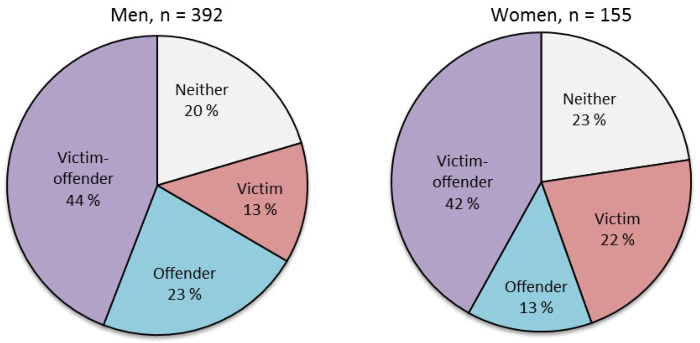Victimization among substance users is common
When the NorComt study at SERAF interviewed over 500 people entering substance use treatment, half reported that they had been victims of theft and one third that they had been victims of violence over the past six months. Compared with vulnerability to crime in the general population (SSB), the incidence of theft and violence was 8 and 16 times higher among substance users respectively. It was also common with repeated episodes of both theft and violence, especially among women.
The victim-offender overlap
While there is a high prevalence of crime victimization among substance users, there is also a high proportion of criminal offending. There is often a large overlap between those who commit crime and those who are victims of crime; this was also true in the NorComt study where over 40% fell within the “victim-offender” group.

What characterizes substance users who are victimized?
For all, victimization was associated with poor mental health and a more serious substance use pattern. In the "victim only" group, this included more symptoms of anxiety and depression, the use of stimulants and using a higher number of different substances. In the "victim-offender" group, victimization was associated with attempting suicide earlier in life and injecting substances. In the "victim only" group, victimization was also strongly associated with an unstable living situation.
What are the practical implications?
It is important for clinicians, correctional staff and politicians to be aware of the high incidence of victimization among substance users and the negative consequences that may follow. In particular, it is not intuitive that those who commit crime themselves more often are victims of crime. Poor mental health and more serious substance use may mean that those exposed to crime need more comprehensive treatment, including a need for victim care.
Further, it is important to emphasize that there was a strong association between victimization and unstable housing. It is not surprising that people without a door to lock are more vulnerable to crime. A housing policy that ensures safe living environments for substance users can help break a pattern of repeated victimization.
Read the full article here
